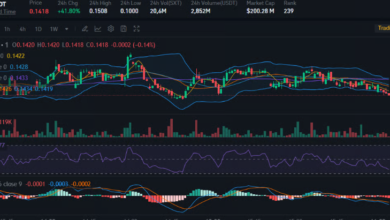Indexed Universal Life: A Smart Approach to Financial Security

Introduction
In the evolving landscape of financial planning and insurance, individuals seek solutions that offer both protection and growth. One such product gaining attention is indexed universal life (IUL) insurance. Known for its flexible structure and market-linked growth potential, IUL stands out among life insurance options. Unlike traditional policies, it merges permanent life coverage with the opportunity to build cash value through interest tied to a financial index. This article delves deep into the core aspects of indexed universal life, its benefits, potential drawbacks, and how it can be an integral part of a holistic financial plan.
What Is Indexed Universal Life Insurance?
Indexed universal life is a type of permanent life insurance policy. Unlike term insurance, which expires after a set period, IUL covers the policyholder for their entire life as long as premiums are paid. It also features a savings component—referred to as cash value—which earns interest based on the performance of a selected stock market index, typically the S&P 500.
The unique advantage of IUL is that while it allows policyholders to benefit from market upswings, it also provides a safety net against downturns. This balance is achieved through guaranteed minimum interest rates (floors) and maximum interest caps, making IUL a relatively low-risk investment option compared to direct market investments.
See also: How Data-Driven Insights Are Transforming Business Growth
How IUL Works
Every IUL policy consists of three primary elements: death benefit, cash value, and premium flexibility.
- Death Benefit: This is the amount paid to beneficiaries upon the insured’s death. It can remain level or increase over time depending on the chosen structure and accumulated cash value.
- Cash Value: Part of your premium goes into the cash value, which earns interest based on index performance. While your money isn’t directly invested in the stock market, your returns are influenced by it.
- Flexible Premiums: Unlike whole life policies, IUL offers flexibility in premium payments. If the policy’s cash value grows sufficiently, it can cover the cost of insurance, allowing you to reduce or skip premiums without losing coverage.
Interest Crediting Strategy
The cash value in an IUL grows through an index crediting strategy. Here’s how it typically works:
- Participation Rate: Determines what portion of the index gain will be credited. For example, with a 90% participation rate and an index gain of 10%, the policy would be credited with 9%.
- Cap Rate: Sets the maximum return you can earn. If the cap is 12% and the index gains 20%, you still receive only 12%.
- Floor Rate: Protects you in down markets. Most policies have a floor of 0%, meaning you won’t lose value even if the index performs poorly.
This mechanism offers a balance of growth and safety, attracting conservative investors who want to avoid the volatility of equities while earning more than they would in a traditional savings account.
Advantages of Indexed Universal Life
1. Lifetime Coverage
Unlike term life insurance, IUL provides permanent protection. This means your beneficiaries are guaranteed a payout regardless of when you pass away, provided the policy is maintained properly.
2. Market-Linked Growth with Downside Protection
You get the benefit of stock market performance without being directly exposed to its risks. Even in a bad year, the floor ensures you won’t lose cash value due to poor market returns.
3. Tax-Deferred Accumulation
The interest earned on the cash value grows tax-deferred, similar to retirement accounts like IRAs and 401(k)s. This allows your savings to compound more efficiently over time.
4. Tax-Free Loans and Withdrawals
You can borrow against your cash value without triggering taxes, provided the policy remains in force. These funds can be used for emergencies, college tuition, or retirement.
5. Flexible Premium Payments
The ability to adjust premium payments makes IUL ideal for individuals with fluctuating income. You can pay more in good years to build cash value and less during lean times.
Drawbacks to Consider
While indexed universal life has many benefits, it’s not without its downsides. Here are a few considerations:
1. Complexity
IUL policies are more complex than traditional life insurance or even standard investment products. Understanding participation rates, cap rates, and crediting methods requires guidance from a knowledgeable advisor.
2. Cost Structure
IULs often come with higher administrative and mortality charges, especially in the early years. These fees can reduce cash value growth if not carefully managed.
3. Cap Limitations
In high-performing markets, the cap rate may prevent you indexed universal life from realizing the full potential of index gains. This limits your upside compared to direct investments in stocks or mutual funds.
4. Risk of Policy Lapse
If the cash value becomes too low to cover policy charges and premiums are not adequately funded, the policy may lapse. This could result in a loss of coverage and potential tax consequences if loans are unpaid.
Ideal Candidates for IUL
Not everyone will benefit equally from indexed universal life insurance. It’s most suitable for:
- Individuals with a long-term outlook: IUL works best when held over a decade or more to allow cash value to grow meaningfully.
- High earners seeking tax advantages: Those who’ve maxed out other retirement vehicles can use IUL as an additional way to grow wealth tax-deferred.
- Parents or grandparents planning for future education expenses: Policy loans can help fund college tuition without impacting federal financial aid eligibility.
- Business owners: IULs offer a strategic way to provide key employee benefits or fund buy-sell agreements.
Riders and Customization Options
One of the strengths of IUL is its flexibility. Many insurers offer optional riders that enhance the policy’s functionality:
- Long-Term Care Rider: Allows access to death benefits for long-term care expenses.
- Chronic Illness Rider: Pays part of the death benefit if the policyholder suffers from a qualifying illness.
- Overloan Protection Rider: Prevents the policy from lapsing due to excessive borrowing from the cash value.
These additions can be extremely valuable depending on individual needs, further tailoring the policy to your goals.
Steps to Selecting the Right IUL
To choose the best indexed universal life insurance policy, consider the following steps:
- Evaluate Insurers: Choose a financially stable insurance provider. Look at ratings from firms like AM Best and Moody’s.
- Understand Index Options: Some insurers offer multiple index choices, which can impact your returns.
- Compare Fees: Ask for a detailed breakdown of charges and how they affect your cash value over time.
- Consider Policy Projections: Review illustrations showing how your policy could perform under different market conditions.
- Work with an Expert: Consult with an experienced financial advisor or licensed insurance agent to avoid common pitfalls and ensure the policy fits your needs.
Conclusion
Indexed universal life insurance is a versatile product that serves both as a financial protection tool and a strategic savings vehicle. By offering market-linked cash value growth with built-in downside protection, it appeals to individuals looking for long-term, flexible, and tax-efficient solutions. While not a one-size-fits-all policy, for the right person, IUL can be a cornerstone of comprehensive financial planning.
Understanding the structure, benefits, and risks of an IUL policy is essential before committing. With the right approach and proper financial guidance, indexed universal life can help secure your family’s future while giving you access to a flexible, growth-oriented financial tool.





